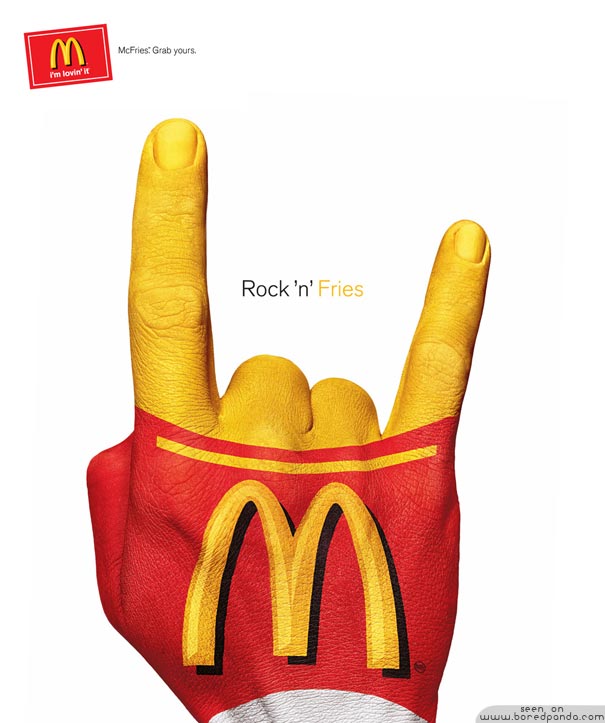Persuasion can be a powerful tool, but as the comic strip bellow show, force is not a part of it. Rather, persuasion, in particularly with advertisements, is more about properly communicating your ideas in a coherent way (Simons, 2011, p. 7). Therefore, this blog post will seek to dissect the meaning of persuasion, rhetoric and look at the ethics within advertisement.

Simons (2001) defines persuasion to be a form of “human communication designed to influence the autonomous judgements and actions of others” which is in a sense changing how the receiver thinks, feels or acts (p. 7). Again, I would like to assure you that this is not an act of forceful imposition, but rather predisposes people to see truth and falsity slightly different way, from a slightly different perspective (p.8). So in regards to truth, that means it would just be affecting how their sense of what is true as facts are so highly debatable.
However, such communication may also have some grey areas, which are cases were the intention is hard to desirer (Simons, 2001, p. 9). After doing some historical and philosophical research, I have found that most other the time the intentions are what worries people as it has the potential to be a corrupt art. Aristotle comes to the defense of persuasion and rhetoric as it is an instrument “for giving effectiveness to truth” (p. 4). Not only this, but Socrates characterizes persuasion in two ways: one where is seems overpowering and the other where it achieves power with the others. This is because truth is a powerful thing that can only be shared through communication is it is communicated persuasively to them.
Before moving onto understanding persuasion in the context of advertisement, we must also mention rhetorics. Rhetoric is a theory of persuasion dating back all the way to Ancient Greece (Sonesson, 2013, p. 7). Through persuasions tactics, you are trying to get people to see your way through particular methods. these methods can be defined as invento (which is when you find out what you want to talk about), disposito (the ordering of that particular discourse), elocutio (stylised elaborations such a metaphors), actio (pronouncing the discourse) and memoria (the memorisation) (p.8-10). This traditional way of using the methodology has been the basis for rhetorics to change further over time, in particular with icons and advertisement.
In the readings, Absolute Vodka was used as an example of how a Swedish brand got rid of its tries to its home country and used European cities to persuade people to consider them more of an European brand. In addition, the Swedish brand IKEA was used to demonstrate how advertisements used rhetoric to change international consumers’ ideas of Sweden. For example, instead of portraying more negative stereotypes, the quality, design and positive characteristics were highlighted (Sonesson, 2013, p. 20). Therefore, in regards to ethics, I think advertisement and rhetoric should be allowed as falsehood is not created, but rather a different way to consider the truth or different side is being justified. Let’s look at an example:

Anyone who knows me, knows I am not a fan of McDonalds or fast food in general. I do not think it is healthy and a look down at advertisements targeted at children. However, I wanted to choose a brand I did not like to show that persuasion in advertisement is ethical. In the image above, we see the famous rock ‘n role hand-sign. Everyone knows it, in particular older generations that grew up with the rebellious spirit of rock music. This is therefore playing on the topos of American rock history and the edginess and coolness that came with the time. On top of this hand, the typically logo for McDonalds has been painted on in the colors every identifies with the company. Not only this, but the form of the had also mimics the shape of the red box of fries you get when purchasing them. The finders almost perfectly resemble the fries as well.
Now, the advertisement is not trying to show that their fries taste like someone’s dirty hand, but rather it plays upon the ethos of the rock ‘n roll spirit, showing that their fries rock, or are as good as, the cool music the viewer will be familiar with. The slogan “Rock ‘n Fries” also draws upon this notion and also demonstrates that by eating their product, you will also be more rock-like, cool and maybe even that you have good musical taste.
This rhetoric is ethical in my opinion as it is not promising a falsehood, but rather changing your perception of the brand and how it can make you in turn feel. By drawing upon certain characteristics and points of view, an argument can be better understood and delivered to a bigger crowd. Advertisement just tends to do a very strong job of this, it just depends on how susceptible someone is and if they think critically enough. However, there is an argument to be made that if the intention is unclear and that they too drastically manipulate the perspectives, the form of persuasion would be unethical.
Reference List
Simons, H.W. (2001). The Study of Persuasion. In: H.W. Simons with J. Morreale & B.E. Gronbeck, Persuasion in Society (pp. 3-24), Thousand Oaks: Sage.
Sonesson, G. (2013). Two strands of rhetoric in advertising discourse. International Journal of Marketing Semiotics, 1(1), 6-24.
